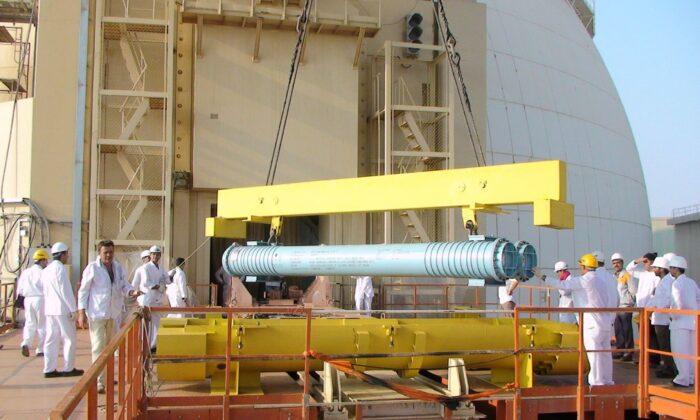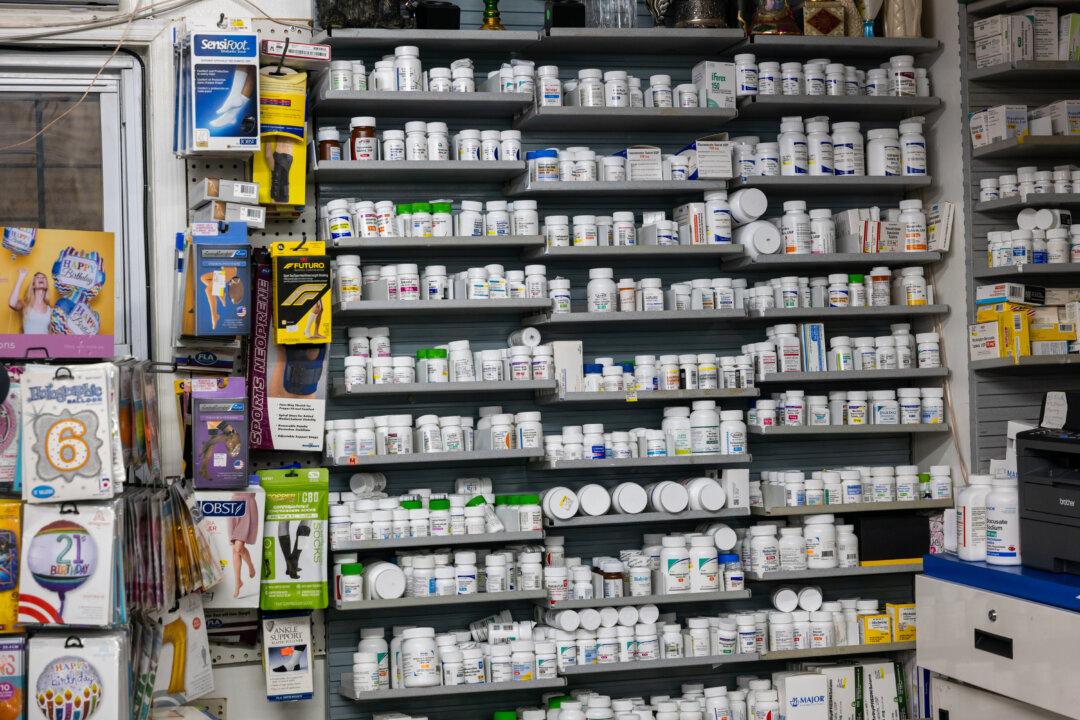The world is less safe today than in 2020 from the threat of a nuclear accident or terrorism involving a nuclear weapon, according to the 2023 Nuclear Security Index.
The annual report produced by the Nuclear Threat Initiative (NTI), a nonpartisan organization focused on reducing nuclear and biological threats worldwide, was released on July 18. The Index uses publicly available information to score the progress of governments in securing nuclear materials from theft or disaster.
This edition of the Index showed a decline in overall progress, the first since tracking began in 2012. Eleven of 22 nations, including the United States, possessing at least 1 kilogram of enriched uranium or separated plutonium scored lower than the previous year.
“We need an urgent course correction,” said Joan Rohlfing, president and chief operating officer at NTI, during the July 19 presentation of the Index in Washington.
“In the nearly 40 years I’ve been working on these issues, I don’t recall a more dangerous or challenging moment than the present on so many fronts, from the safety of the world’s nuclear power reactors to the security of nuclear and radiological materials to proliferation of nuclear technologies—and the growing risks associated with cyber and AI, and, of course, the war in Ukraine,” she said.
Growing Threats
Concern over the security of nuclear materials was heightened at the end of the Cold War. As the Soviet Union dissolved, the United States provided assistance in dismantling nuclear weapons in former Soviet states, including Ukraine, Georgia, Azerbaijan, Belarus, Uzbekistan, and Kazakhstan. The nuclear materials were, in many cases, converted to fuel for civilian reactors.Progress in securing nuclear materials of all types has stalled in recent years, according to Ernest Moniz, CEO of NTI.

“This diminishing commitment to reducing nuclear risks is deeply disturbing. Indeed, it is unraveling hard-fought progress on nuclear security dating back to the end of the Cold War when the United States and Russia worked together to remove and secure weapons-usable nuclear materials left in former Soviet territory,” Mr. Moniz wrote in the 2023 Index.
At the same time, threats have increased as Pakistan, India, Israel, and North Korea have acquired nuclear weapons, and commercial uses of radioactive materials in power generation, medicine, and other fields have expanded.
“What we’re seeing today is that the civilian stockpiles of separated plutonium are growing at an alarming rate. Since 2020 global inventories are up a staggering 17,000 kilograms of plutonium, which is a number more than 2,100 nuclear weapons,” said Scott Roecker, NTI vice president for nuclear materials security.
Design Security
Nuclear reactor technology has evolved a great deal in recent years leading to the development of more than 70 advanced reactor designs, according to Mr. Roecker.“Not many of [the newer designs] are actually taking nuclear security into consideration in the design phase, which is one of the things that we do recommend—that you implement security by design at the very beginning of these developing these reactors,” Mr. Roecker said.
That includes choosing the least dangerous nuclear fuel, he said.
“Some of these designs do actually include a plutonium-based fuel. So we want to really focus efforts on advanced reactors using [high-assay, low-enriched uranium] HALU or [low-enriched uranium] LEU fuels,” he said.
Site Security
The nuclear reactor in Zaporizhzhia, Ukraine, illustrates the need for increased security procedures at any nuclear facility, according to Mr. Moniz.
The facility was attacked and captured by the Russians in 2022, during which a fire broke out on the grounds. The destruction of the Kakhovka Dam potentially threatened the reactor’s water supply. A consistent supply of water is needed to cool nuclear reactors.
While nuclear facility operators by themselves cannot defend against an invading army, they can ensure that their site is guarded against terrorist attacks or natural disasters, according to Mr. Roecker.
Crisis and Opportunity
The task of securing nuclear materials is more urgent now, according to Ms. Rohlfing, and it requires sustained international attention and cooperation.“The management of nuclear materials, nuclear weapons, nuclear technology is going to be an ongoing challenge for humanity forever,” she said.
“And so it’s not just a matter of securing this material today, tomorrow, or next year. What we really need to do is think long-term about the kind of international system that must be put in place for humanity to survive a catastrophe. We’re not there yet.”
Yet there are positive signs, Ms. Rohlfing believes, because of developing technologies in the nuclear industry.
“It gives us an opportunity to rethink the security system that wraps around the civil enterprise in a way where we can strengthen the system as we move forward. It gives an opportunity for a wide range of government to get engaged in this exercise,” she said.





